There are so many different types of birds in North America, it’s hard to keep track. The US Fish and Wildlife Service estimates that there are more than 9,000 species found in the United States alone!
And in this page, we’re going to talk about the most common birds’ species found in North America. If you are out in the wild, or even just your backyard, there is a good chance that one of these common birds will fly by.
The most common birds can be found everywhere from city parks, to farmlands and even your own backyard!
So if you find yourself wondering which bird you just spotted – one of these 30 should help narrow it down!
1. Indigo Bunting
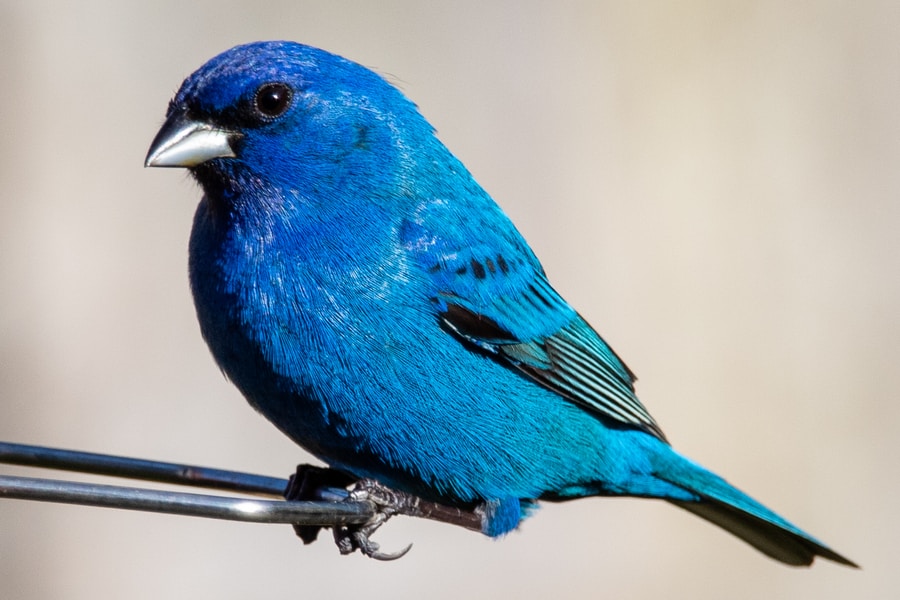
The indigo bunting, or Passerina cyanea, is a medium-sized songbird of the family Cardinalidae. It breeds in eastern North America from Nova Scotia to Mexico, central America and south to Columbia. It migrates for the winter to southern Florida, the West Indies and Central America.
Its natural habitats are open countrysides and brushy edges; it does not reside in dense forests or swamps. It frequents farmland, pastures, prairies and other open areas with clumps of trees throughout most of its range.
Its chief food is insects gleaned from grasses (such as lygus bugs) but will also consume tree seeds planted by farmers when they are made available.
2. Cedar Waxing
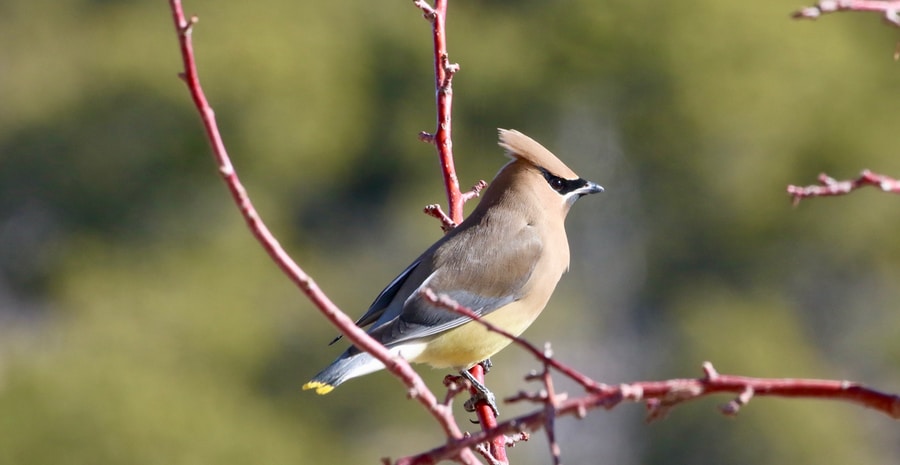
The Cedar Waxwing is a small bird native to North America. It is mostly brown and the beak and tail are black. Most male birds have a rose-red waxy strip of false eye lashes surrounding their yellow eyes.
The term “waxing” comes from the behavior of these birds, which extract wax from cedar tree branches, spread it on twigs of conifers to form nests.
The nest then will be used by females for incubating eggs and raising chicks through the summer months until they fledge in autumn, at which time they return south to more southern nesting ranges or winter range habitats where food sources abound again.
3. American Wigeon
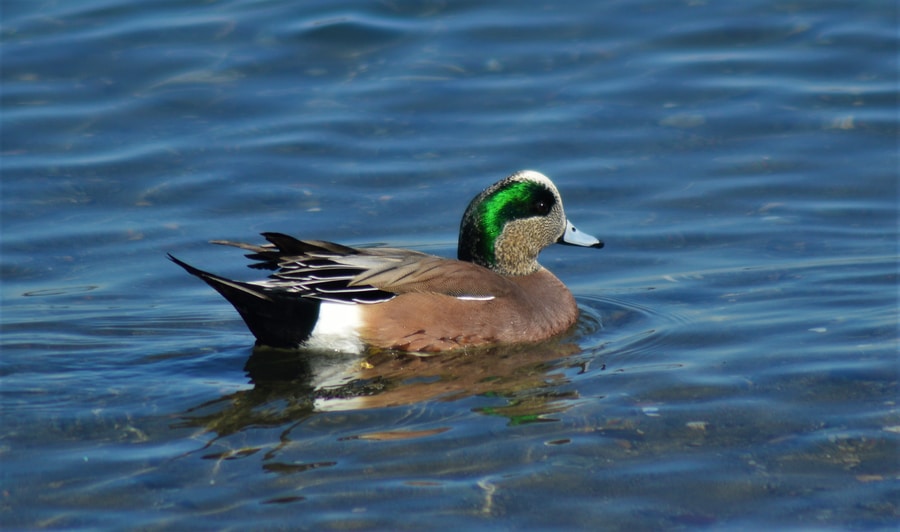
The American Wigeon (Anas americana) is the smallest duck species regularly nesting in Canada. About 13-14 inches long, this species is slightly larger than a Mallard but smaller than a Gadwall. It has dark brown eyes and legs, with an white bill with black curves.
The sexes are similar in appearance; females can be distinguished by their plumage–three different patterns exists for them to choose from, which include grey hooded, barred chestnut cap and plain brown or buffy head markings.
They typically eat invertebrates such as insects and snails, but will occasionally eat seeds or fresh produce if hungry enough during migration periods.
This group of ducks prefers wetlands dotted with cattails and other aquatic plants, where they can find food and protection.
4. Hairy Woodpecker
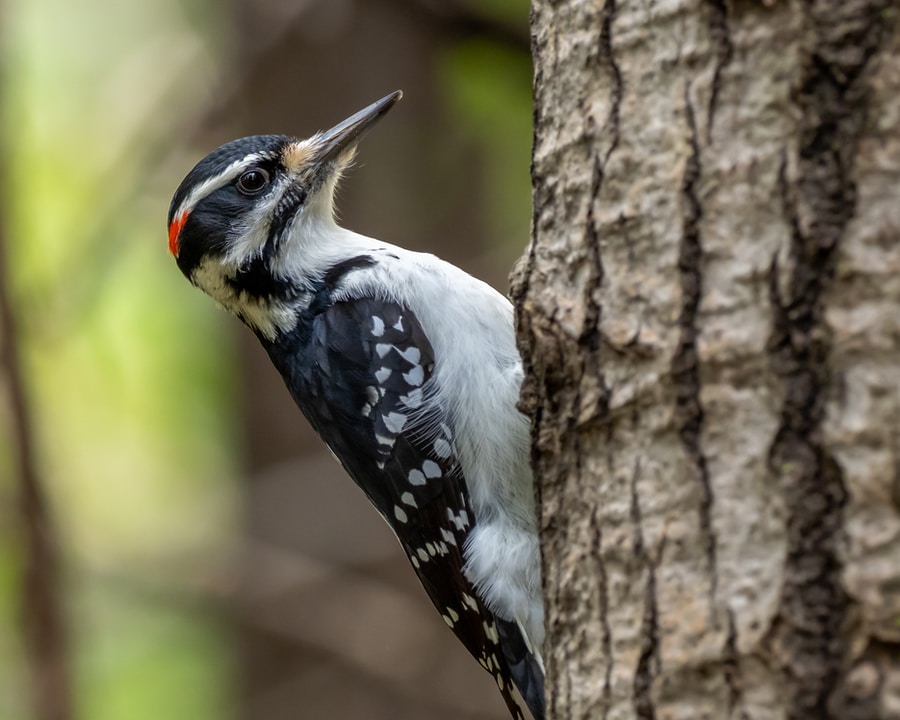
The Hairy Woodpecker (Picoides villosus) is a medium-sized bird residing in the forests of North America.
They are among the most common woodland birds migrating south to the U.S. during winter and Canada during summer, but they can also be found in denser forests year round where their population density depends on food availability and breed frequency.
It is least likely to be confused with any other member of the genus, since its size and head pattern are distinctive. Its dark plumage helps them blend into tree bark during their hunts for insects.
The Hairy Woodpecker has a stout projection from the tip of its bill that aids in holding prey once captured by the claws. This projection is known as a “playing feature.”
The Hairy Woodpecker has a black cap, white cheeks, brown legs, white underparts with dark bands, red wings and tail feathers with darker brown bars on them which can be seen from behind while perched or when flying overhead.
5. Northern Cardinal
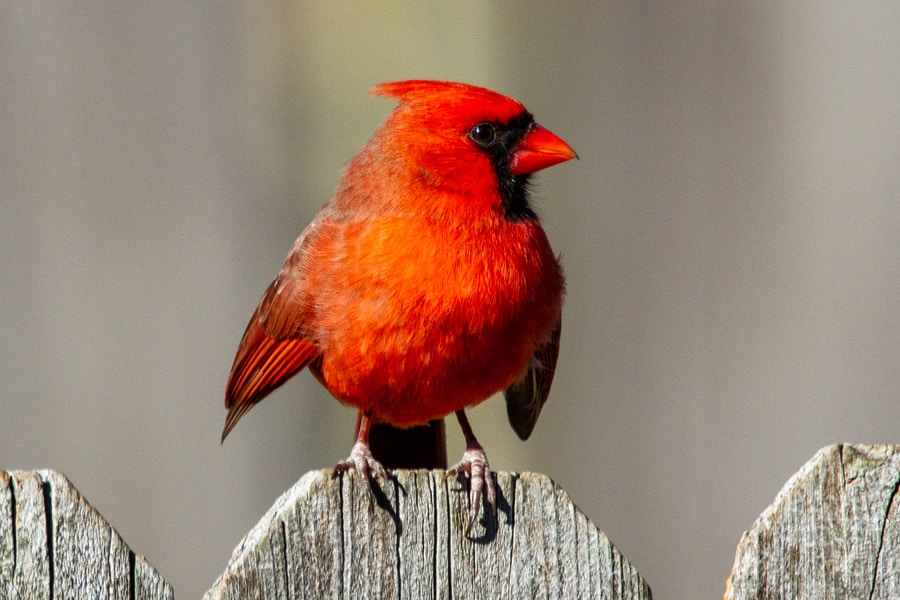
The Northern Cardinal is a bright red bird of the New World. It lives in North America from southern Canada to as far south as Appalachian Mountains, and it can be found east of the Rocky Mountains from central Mexico to Colombia, including most of the US and Canada.
The Northern Cardinal is native primarily to North America with allopatric populations extending into Central America.
Predominant populations are found on the eastern coast below Montane forests up through woodlands on either side of Ohio Valley where more moist conditions exist or on rocky slopes along Tennessee river drainage down to Rockies.
Western range occurs below Cascades Range and Sierra Nevadas bordering upon Colorado desert where rainfall equals approximately twelve inches per year (annum).
6. American Crow

The American crow (Corvus brachyrhynchos), or simply as “crow”, is a large bird related to the raven. As a member of the Corvidae family, it belongs to a group of mostly solitary birds that build nests and cache food individually.
The bird grows to about 17 inches in length with females being larger than males on average; its wingspan is approximately 28 inches at rest and 43 inches when expanded.
The beak can make it both an effective hunter and scavenger with black feathers (ranging in shades depending on light conditions) that often turn over each year.
7. Red-Winged Blackbird
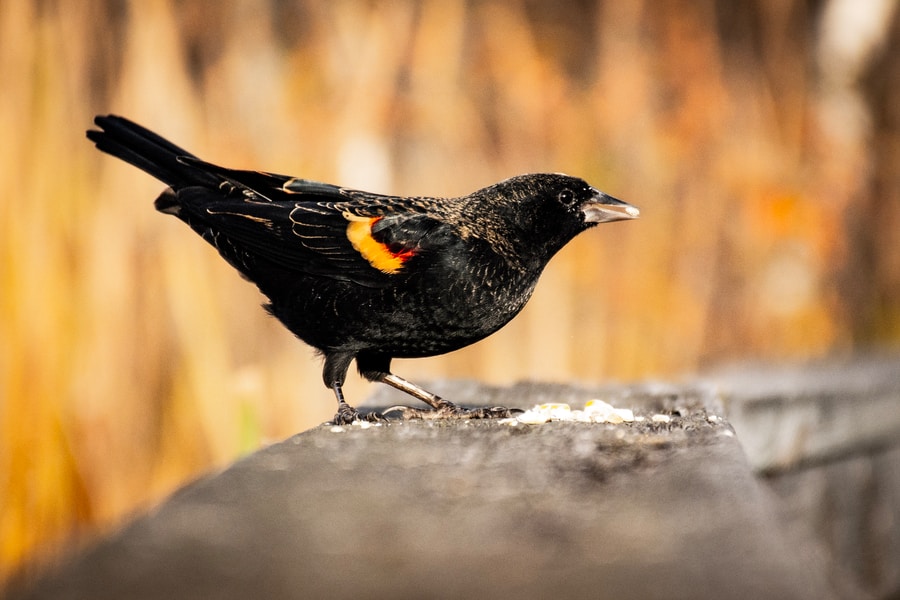
The red-winged blackbird is known for its striking coloration. Red-winged blackbirds are primarily greyish, but males have striking orange red patches on their wings that are visible when they fly up into the air, which led to their name
Red-winged blackbirds are a species of bird that live in North America. They have a red color on their wings and in the summer they usually eat insects. During the winter they eat grains and seeds.
8. Yellow-Rumped Warbler
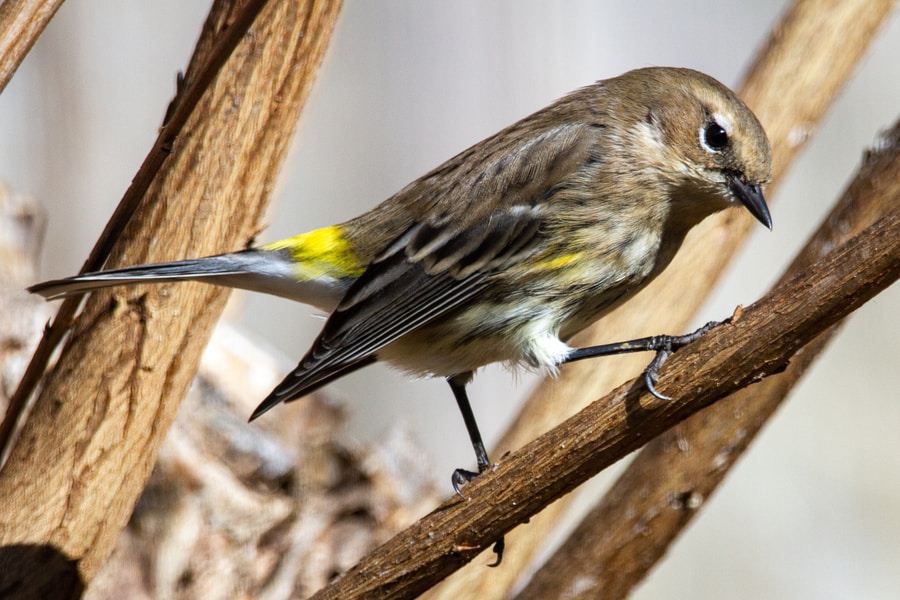
The Yellow-rumped Warbler (Setophaga coronata) is a migratory bird of the New World warbler family. This passerine bird can be found in tropical, subtropical and temperate forested regions of North America.
It breeds throughout the eastern United States and southern Canada, south to north central Mexico, Cuba, Central America and Puerto Rico to northern Argentina.
They are mid-sized birds measuring 7-8 inches long with females weighing between 1/2 ounce to 2 ounces; males are generally 1 ounce lighter than females.
9. White-Breasted Nuthatch
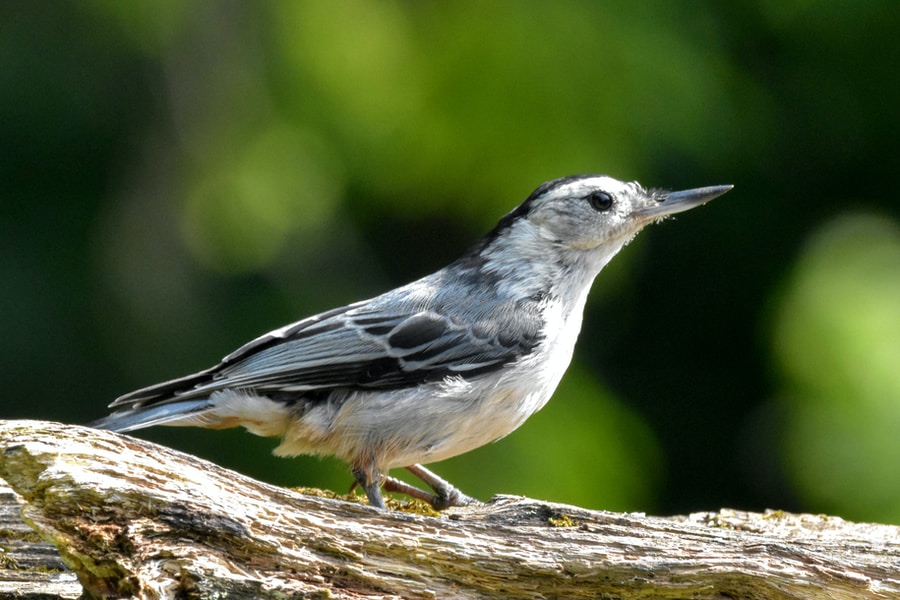
The white-breasted nuthatch (Sitta carolinensis) is a bird usually found in the Eastern United States. This particular species of bird favors deciduous forest, preferring mature oak or pine forests, but will live happily in hardwood forest as well.
They are most commonly found in higher altitudes and can be found up to 12000ft ASL (~3600m). Their underparts are white with black back and wings, a brownish head with a long straight bill.
They have red eyes and a chestnut stripe on their side which goes from the base of their bill down past their navel.
Nuthatches eat insects and other arthropods they find on tree trunks while patrolling in a series of hops along the tree line.
They’ll also carefully remove bark from trees to get at insect larvae or beetle pupae just under the surface.
Nuthatches have been seen staging raids into crevices in buildings to get spiders, beetles and other large arthropods for their diet.
10. Cooper’s Hawk
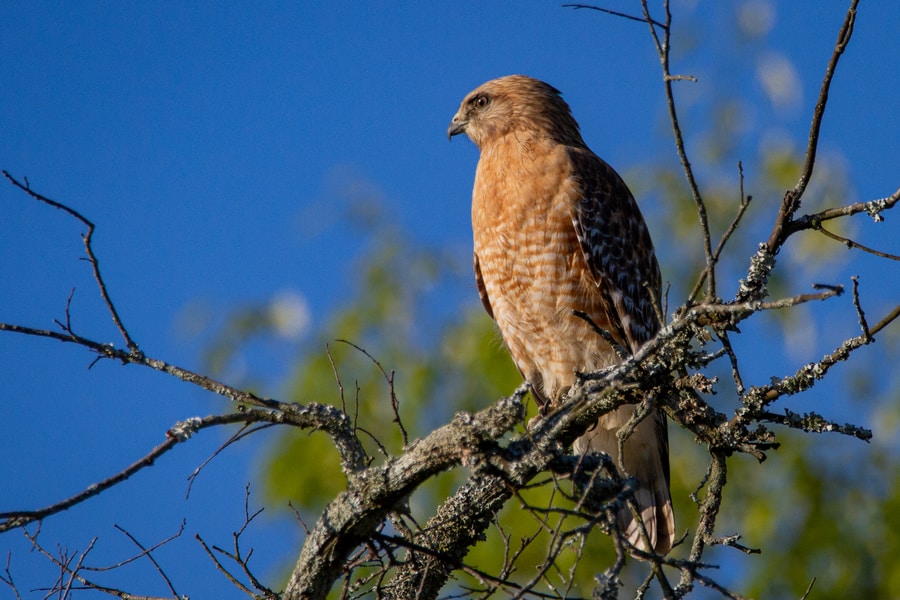
Cooper’s Hawk is an Accipiter, as are many of the most common North American birds of prey such as the Red-tailed and Rough-legged hawk. They differ little from other large hawks and usually do not migrate, so they will often winter nearer to where they live in the summertime.
Cooper’s Hawks can be found in forests and woodlands throughout North America all year long. They frequently travel into developed areas to look for food and to roost at night.
Because they can nest and hunt large prey like grouse, they habitats also include open country with scattered trees habitats where the ground is not allowed to grow thick with vegetation during the winter months.
They eat mostly but they will also hunt songbirds (including chickens), reptiles (such as lizards), amphibians (such as frogs).
Their diet consists primarily small mammals such as rabbits or voles, reptiles, amphibians, and they’ll also hunt rodents and smaller bird species, including chickens.
11. Mourning Dove
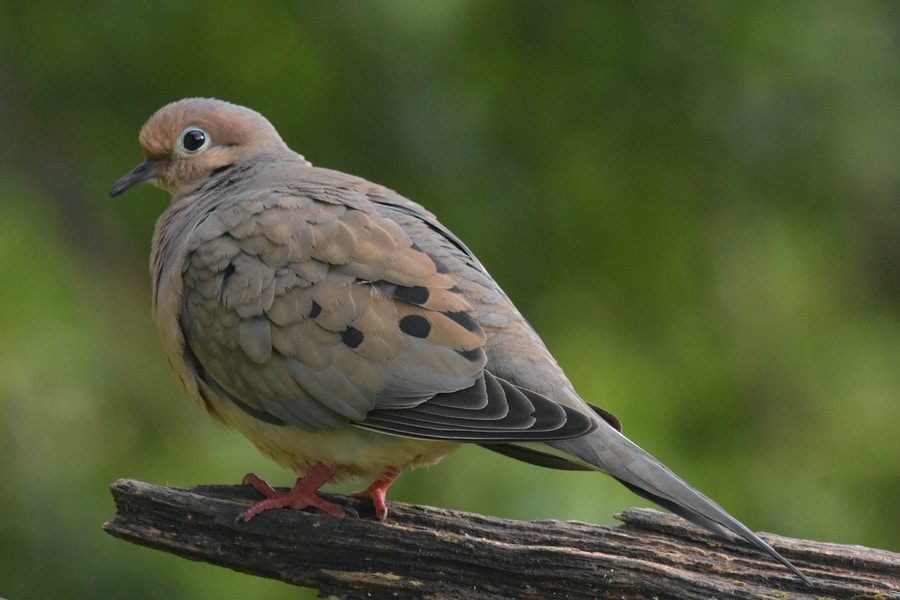
Mourning doves are medium sized birds with soft, grayish-brown wings and a flat crest of feathers that stretch from the top of their head to the back. They have a white stripe on each side of their neck.
Females have a round, yellow or tan patch on each side near their eye. Males also have a buff streak over the eye and they may show more brown in coloration than females.
Like all doves, they feed by perching on branches or flying low to the ground then pecking at food that is found along foliage or earth.
Common foods include seed from weeds, grasses and wildflowers as well as fruit such as figs, grape berries and blackberries which offer seasonal sustenance.
Mourning doves coo softly when nesting or caring for their young. The males may whistle when perched upon the ground near potential mates – but curiosity is not enough to cause one to approach them since they quickly retreat when too close.
12. Carolina Wren
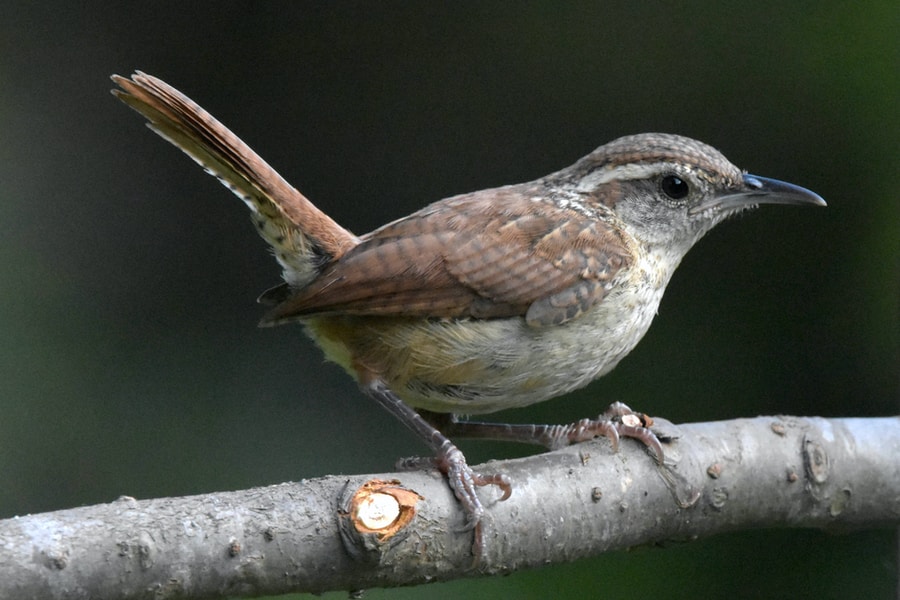
Carolina Wren is a small songbird in the wren family. The wrens are mostly slender, compact birds with short tails and longish pointed wings; some species (mostly New World) live up in trees and build nests.
Carolina Wren is an extremely common breeder across eastern North America, extending into the central prairie provinces of Canada and south through Texas to Central America. Birds can stay here year-round or migrate elsewhere for winter.
It lives in habitats from farms with mature crops to landfills, with little preference for wet or dry locales but preferring areas without tall trees unless they have been thinned so as not to block out sunlight from reaching the forest floor. It feeds primarily on insect preys.
13. Bluebird

The bluebird (Sialia) is a common and widespread bird of the Western Palearctic who’s native to North America. They’re mostly found in less densely forested areas such as sagebrush, fields with grazing animals, and farms.
They’re most prominently found in one-bird nests on fence posts along highways. The blueward prefers open habitats and so they were removed from many eastern forests by lack of use of pesticides and the resulting increase in shrubs.
Bluebird has beautiful colors with turquoise blue throats, yellow bellies and white cheeks. They eat insects and berries.
14. Dark-Eyed Junco
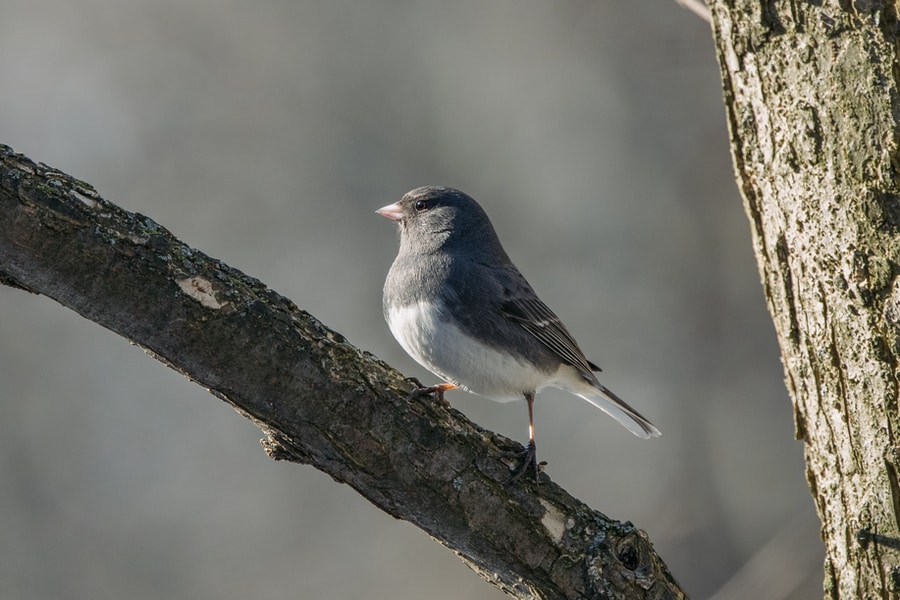
The dark-eyed junco, or snowbird, belongs to the Emberizidae family (the American sparrow). The dark-eyed junco is an endemic species in North America.
The word junco is derived from an Aztec word meaning pigeon or turtledove because of their nodding head behavior while feeding on ground seeds.
This bird migrated south to its winter habitat in Central America and South America. Dark-eye juncos are found throughout the year in southernmost areas of California until mid spring.
A dark-eye junco’s diet includes both plant material as well as insects during all seasons but winter. They catch insects by flycatching, hopping on the ground and walking down leaves into spiders webs for food.
15. American Robin
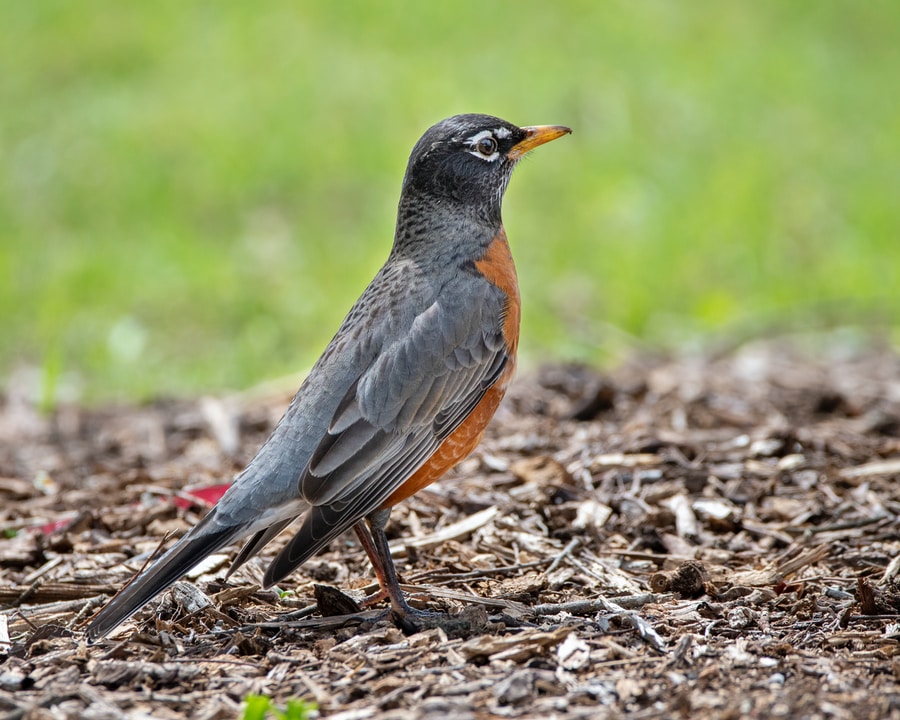
The American Robin is a migratory songbird found throughout North America. It’s most recognizable for its distinctive red breast and white cheek patch with an orange-brown backside.
They are often the first bird heard in the spring arriving at their breeding grounds where they can be spotted singing loudly on bare branches or on utility lines looking for mates with fearless abandon to threats from cats or other predators.
Their diet consists of insects, worms, seeds, fruits, and berries.
Males are showy but females are drab birds known for being somewhat territorial in feeding areas so watch out if one lands near you! They have an average lifespan of 2-3 years although some may live up to 5 years in favorable conditions.
16. European Starling
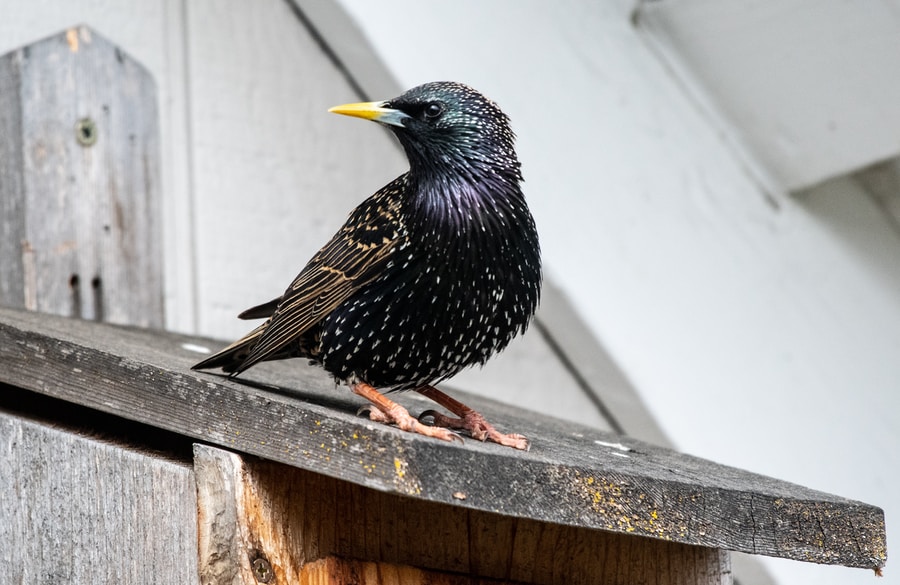
The common name for this bird is “starling”. It was formerly known as the myna, they arrived in North America in 1890. They are common birds to see around Boston and New York. They eat seeds, fruit, insects and spiders.
The European Starling is a medium sized member of the thrush family. They are brown with speckled black and white feathers that make fearsome looking patches on their backs.
Their long, curved beak has a tip that turns downwards in a slight curve. Elegant in flight, they have a short tail and strong shallow wingbeats.
Only males sing in territorial displays to females however both sexes will scream when threatened or when defending nestlings from predators.
17. Northern Shoveler
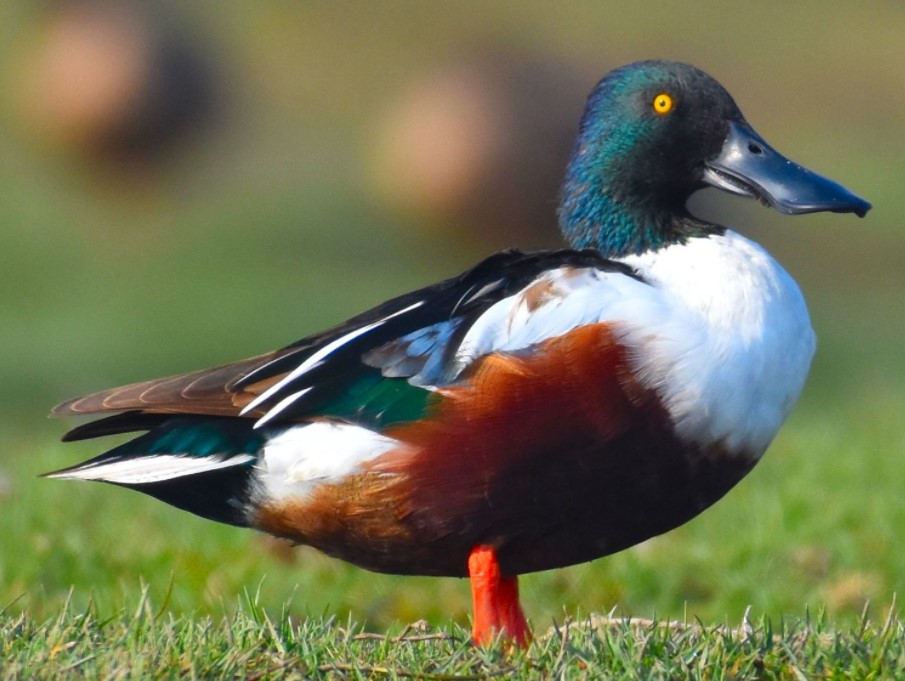
The northern shoveler is a small Anas species of the dabbling duck subfamily. It is migratory, arriving on its breeding grounds in late April and leaving again in early October.
The shoveler prefers to inhabit marshes, bogs or weed-choked ponds near woods or open grassland with a bit of water nearby.
Since they are a shorebird, this means they prefer habitats close to open water such as creeks and slow-moving rivers that allow them to be able to drink safety from predators.
Northern shovelers are large, superficially shovel-shaped ducks. They have a pronounced knob atop the very large bill, which is blue-grey in color.
This duck prefers cold freshwater habitats that are usually near open water or upland habitats during migration, although they do sometimes breed in saltwater marshes or estuaries bordering rivers and lakes.
18. Blue Jay
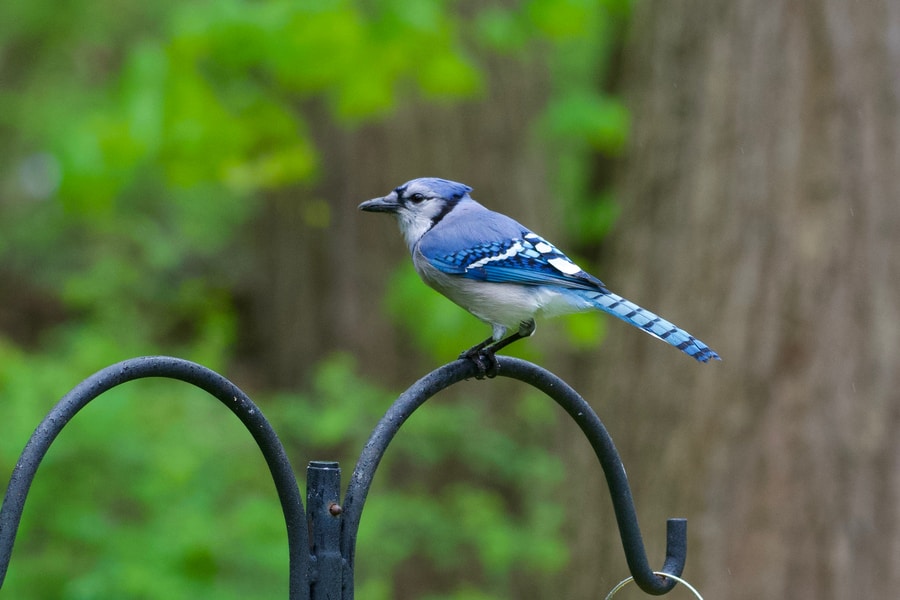
The blue jay (Cyanocitta cristata) is a bird in the Corvidae family found throughout North America.
The blue jay’s coloration makes it hard to blend into its surroundings, so besides being smart enough to recognize it as a dangerous animal, other predators have trouble catching their prey when they are nearby.
This has led many people to give them the nickname “meddlers” because they get excited when they see something interesting happening nearby and want to get involved.
Blue Jays are omnivorous birds that eat fruits, nuts, seeds, insects, spiders and even amphibians! They also tend to feed communal meals at any time of day rather than just during certain periods or sessions like other birds
Most people picture a blue jay as the quintessential bird of the North American woods. However, this particular species is not native to that region.
The blue jay population in North America was introduced with European settlers over 400 years ago. It actually originated in Asia and made its way here by either migrating across land or taking shipboard journeys.
19. Mallard
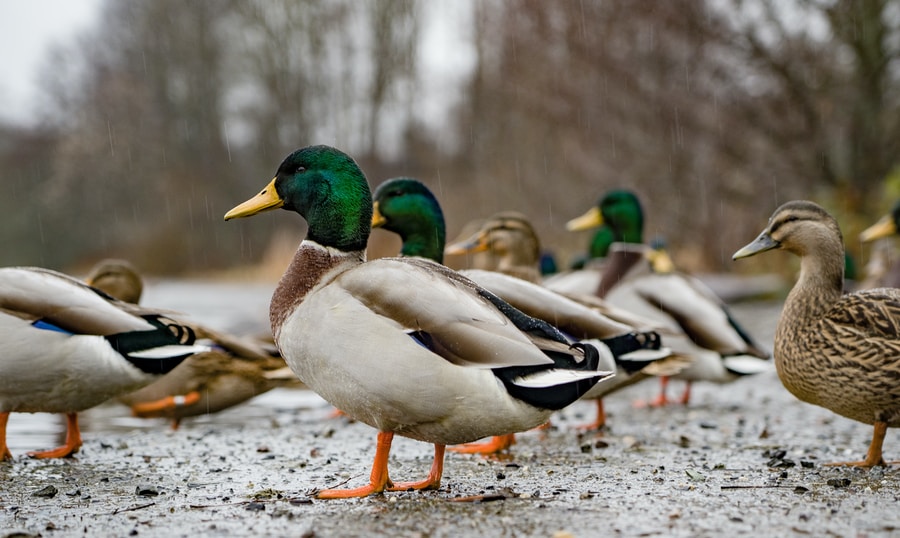
The Mallard duck is an aquatic bird which belongs to the family Anatidae. Mallards are part of a group known as “dabbling ducks”, that actually feed by immersing their head in water to filter the food they find there.
This species can be found all over North America, with most sightings occurring during the breeding season. Male mallards advertise their territory by producing calls called “trumpeting” or “piping.”
Generally, female mallards make these sounds too, but only when caring for their eggs or young chicks.
Mallard ducks eat plants and small animals like worms, shrimp, tadpoles and beetles that can be easily found on land or shallow waters.
20. Chipping Sparrow
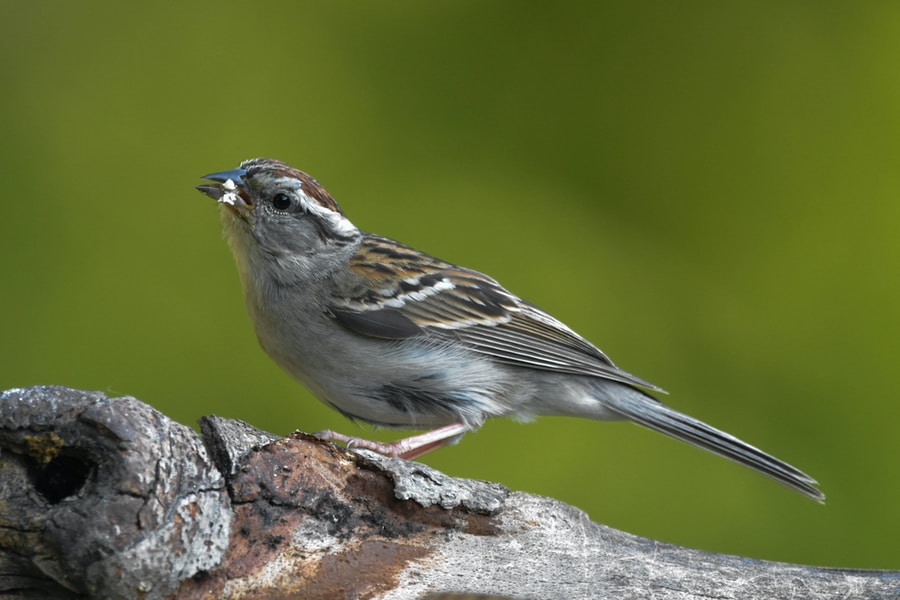
The common American chipping sparrow (Spizella passerina) is a small songbird in the family Passerellidae.
These birds are found in dense shrubs or low trees, screeching their high-pitched alarm call that sounds like “chip.”
Common chipping sparrows feed on insects, seeds, leaves and berries. They are monogamous birds who feed together at the same time of day until one partner works too far away for them to cooperate.
This bird also plays an important role in pollination by habitually visiting flowers after insects have done so.
The female’s plumage is brown-black with white edging around the face while males have lighter colored throats which turn darker during mating season.
21. Red-Eyed Vireo
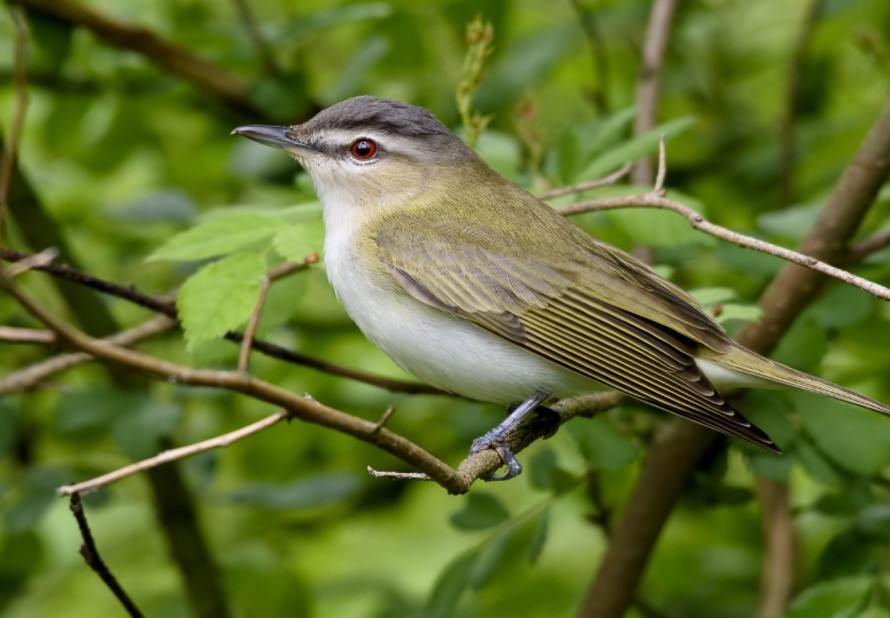
Red-eyed Vireos are found from Southern Mexico to Northern Colombia. This small, pale bird is named for its eye coloration.
The Red Eyed Vireo is a gorgeous songbird with a dazzling display of purples and blues in the wings and tail feathers.
Red eyed vireos have beautiful downy yellow undersides that blend in seamlessly with their natural surroundings while perched on branches or high in treetops.
If you live near a river or pond, you might be lucky enough to enjoy hearing them sing during mating season because they love singing from elevated places such as trees overhanging water sources, bridges over roadways, and eaves of homes!
22. Swainson’s Thush
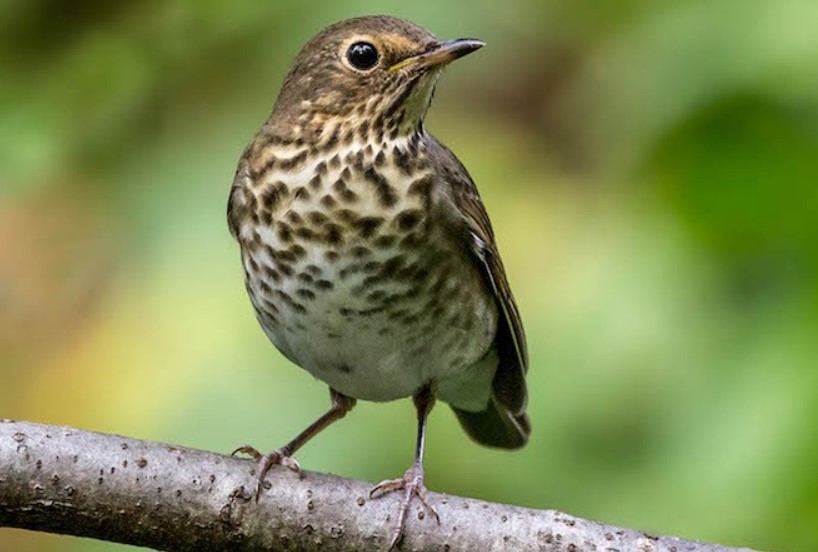
Swainson’s Thrush are classified in the same family as the Red-throated Loon, Hermit thrush, and Song Sparrow. They are mostly found in North America but have been seen across Asia to Australia.
Their diet consists of large spiders, earthworms, snails – they’ll fly many miles to get them! They will also eat significant quantities of aphids which have attracted more recent attention.
Swainson’s Thrushes are identified by their distinctive appearance characterized by their dark forewings contrasting with pale posterior wing coverts.
This species features a unique coloration that distinguishes them from other members of the thrush family due to their adults having mostly black upperparts while juveniles have mostly brown or gray upperparts along with an olive-brown head.
23. Ruby Throated Hummingbird
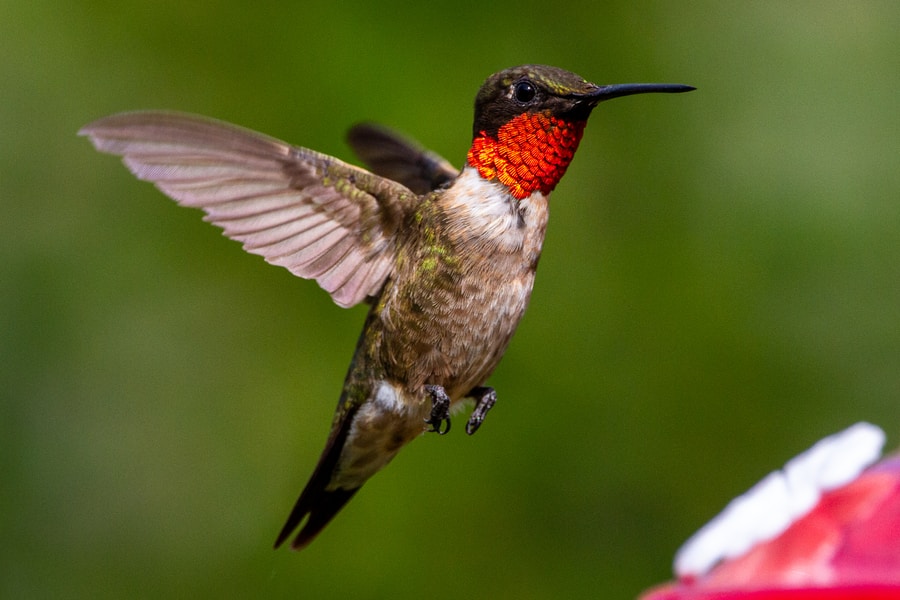
The ruby throated hummingbird is a small American bird native to the Eastern, Central, and Northeastern parts of the United States.
This particular type of hummingbird is also known as the red throat because it has a red patch on its neck feathers that can be seen when they are in flight.
The male Ruby-throated Hummingbird weighs an average of 3 grams; this weight increases significantly at breeding season (to about 5 grams) due to muscle mass needed for territorial contests between males.
Females weigh about 2.5 grams during nesting season and 4-4.8g on average during migration periods with 7 female specimens averaging 4g found in migration patterns over 11 territories put together.
24. Chickadee
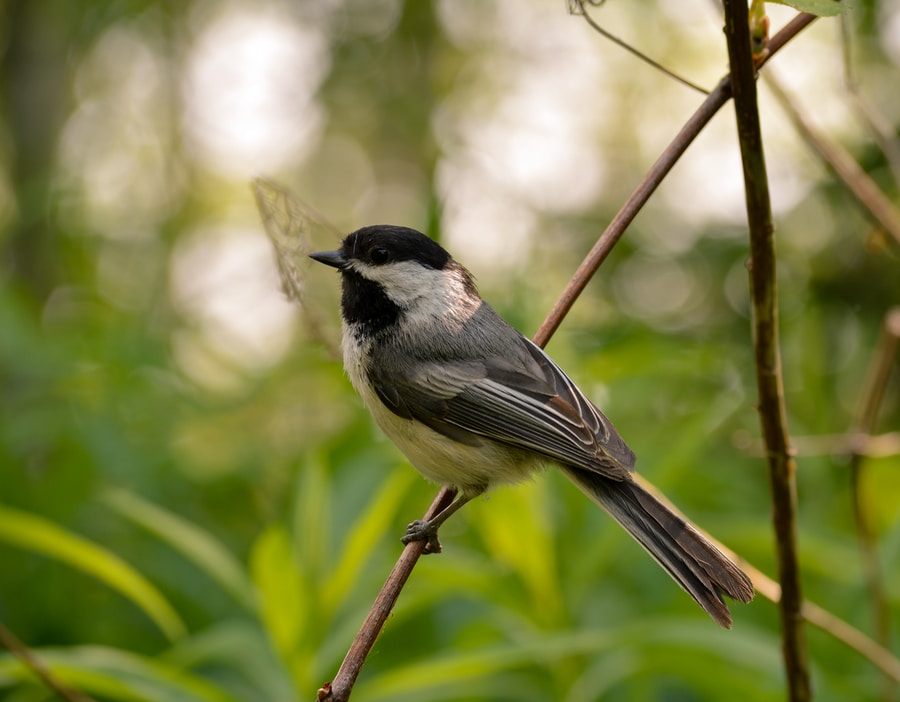
Chickadees are small, mostly non-migratory songbirds in the genus Poecile of which there are many species.
They’re also known as “blackcaps” for their all black caps. The word chickadee likely comes from an Algonquin Indian language.
Chickadees are small, active birds that can be found in North America. They’re the only New World bird species apart from the Towhees to show anything close to starling-like behaviour.
Chickadee bird belongs to what is collectively called “seedeaters”. According to Cornell Lab of Ornithology, about 100 Million seeds are taken by chickadees annually.
And on top of this, many other animals depend on chickadees for their food including squirrels, chipmunks and woodpeckers.
The scientific name of Chickadee bird is Poecile atricapillus which means “black-headed songbird.”
25. Goldfinch
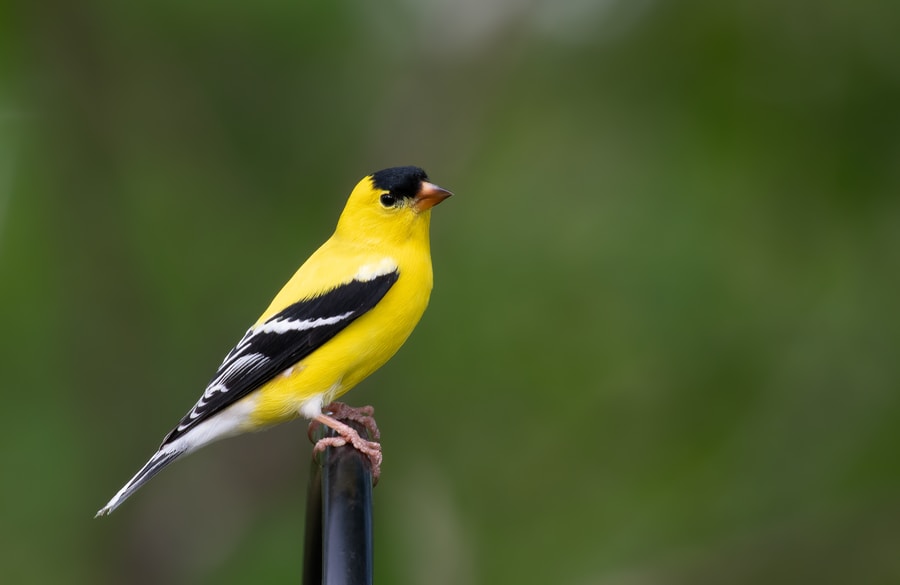
The goldfinch is a small, seed-eating bird that migrates to the UK from Europe. It has been observed in gardens and backyards all over the country.
It has a plump body with a short tail, big orangey breasts and distinctive black head markings. Males have red on their heads and females have yellow heads – it’s these come-hither spotting spots which give them their other name – ‘the ladybirds of the bush’.
The goldfinches are highly sociable birds and whenever they visit our gardens we should be aware that if we want to get really close to feeding time then we should think about putting out plenty of thistle seed or hawthorn berries to see them flock in.
Thank you for this very informative collection. We have enjoyed seeing most of these birds at our feeders and in our back yards, where we live in Northern New York.
What became of the pigeon?